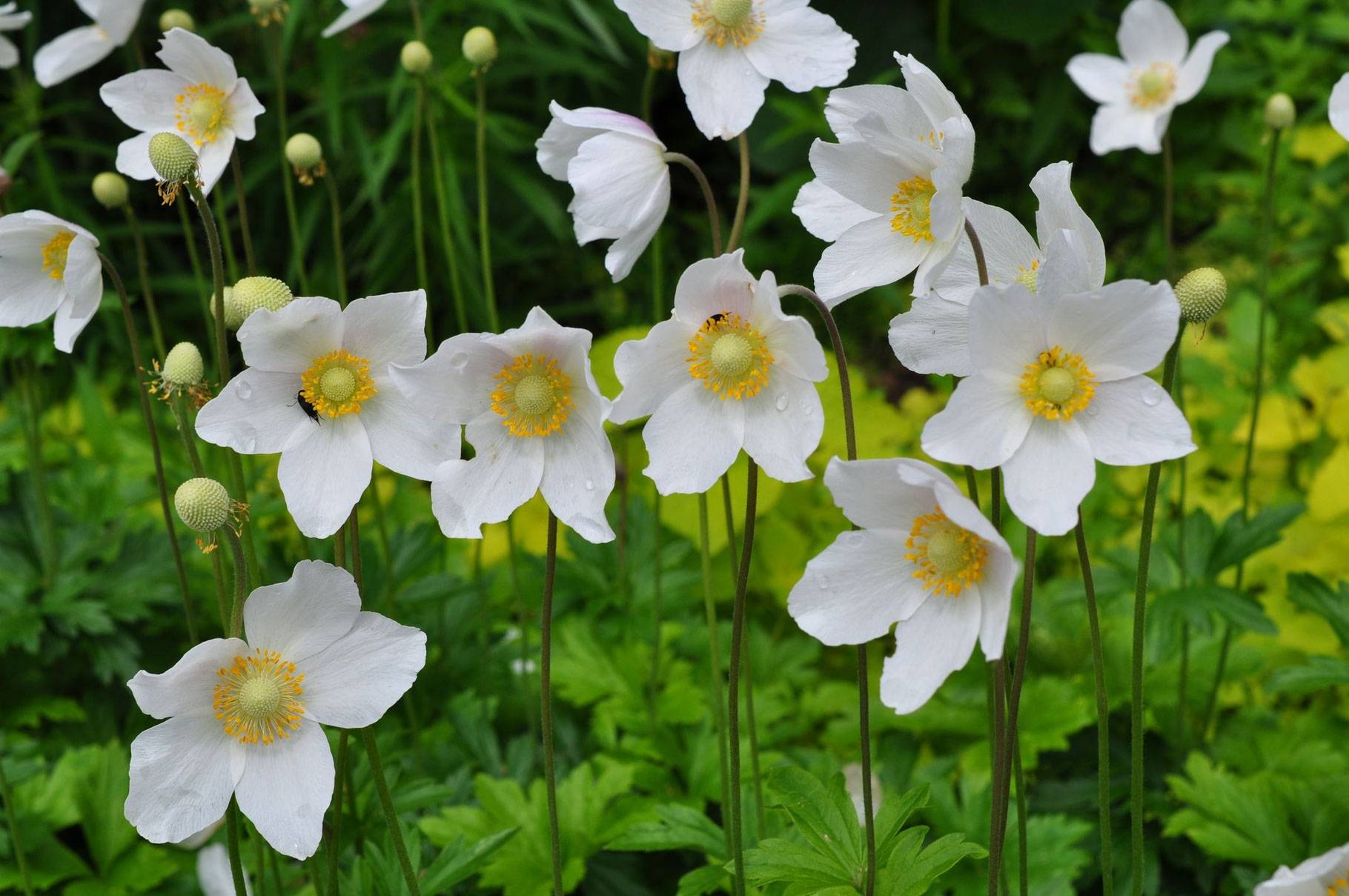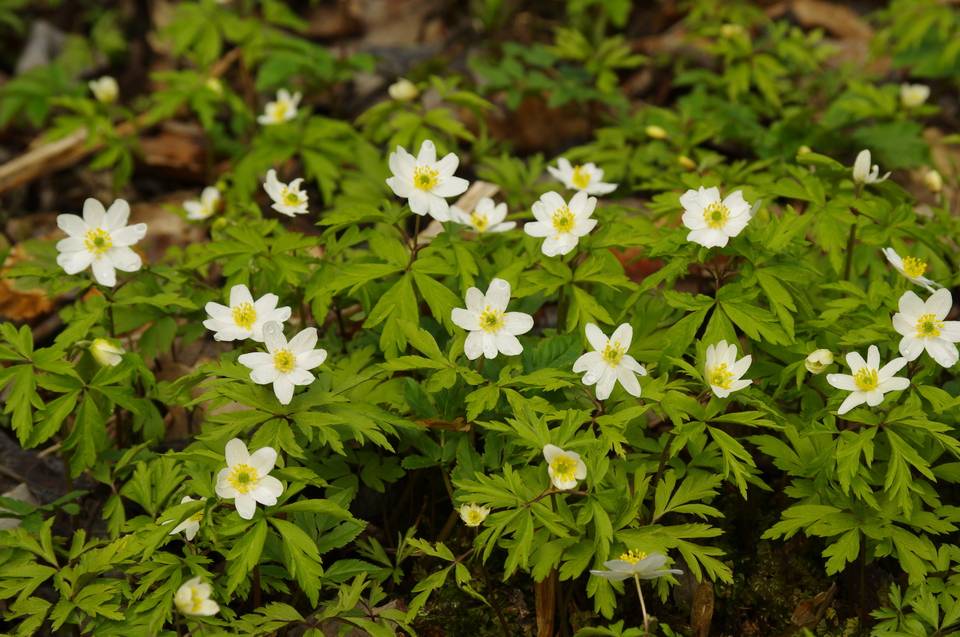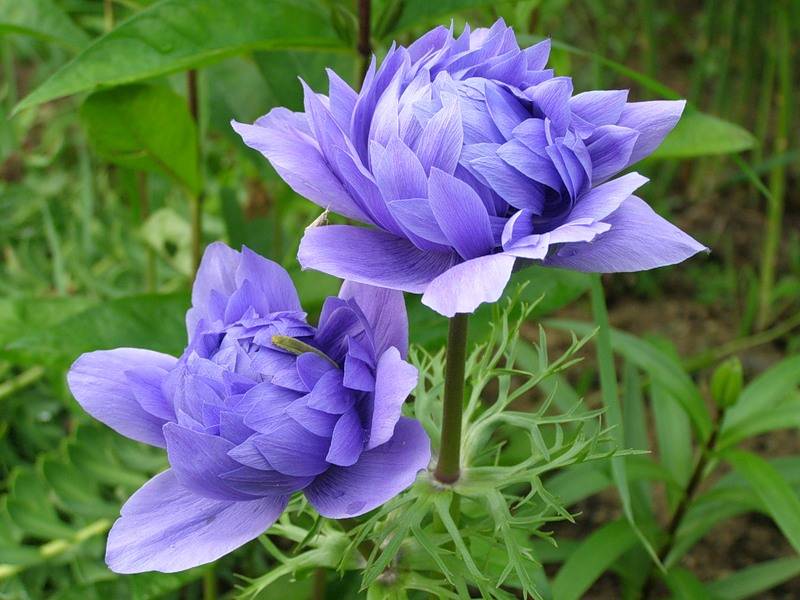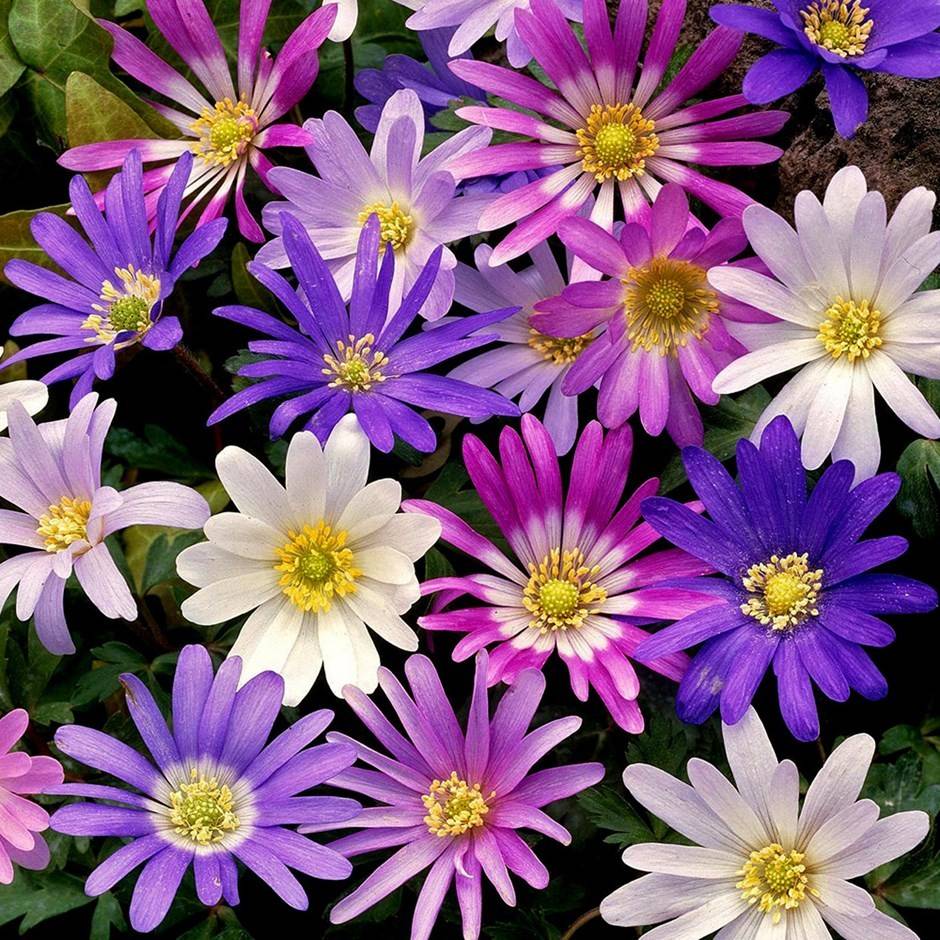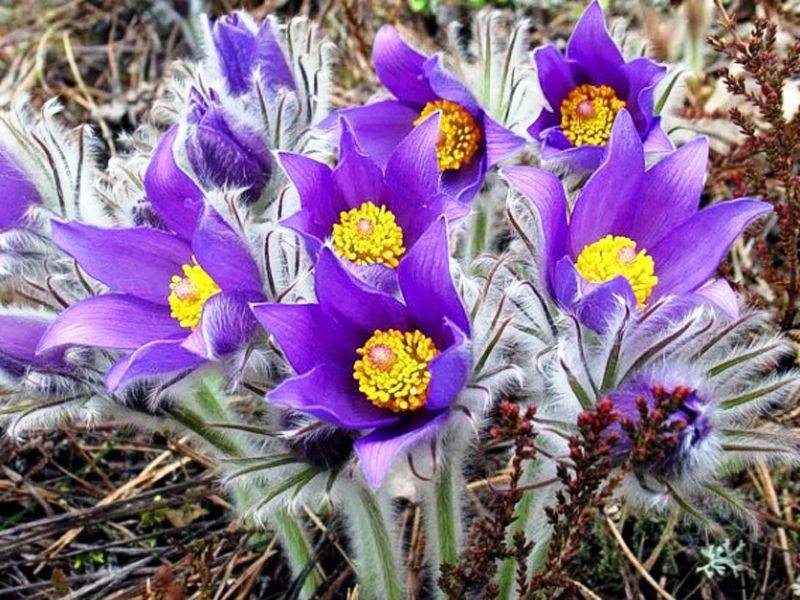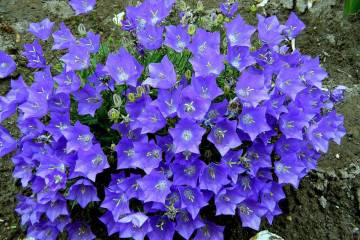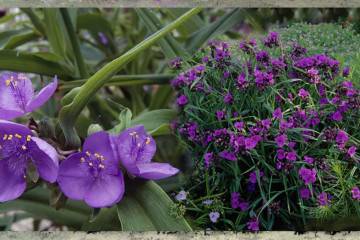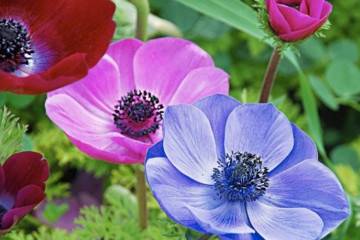Perennial anemone
Perennial anemone (anemone, chickenpox) is a plant belonging to the Buttercup family. It is a decorative flower that comes in many different colors. Visually, anemone is similar to poppy. But this is only an external resemblance. Anemone is widespread not only in summer cottages, but is also used by landscape designers in landscaping urban areas.
Perennial anemone
In natural conditions, the genus of anemones includes more than 150 species. They are common in all climatic zones with the exception of the tropics. Its second name - anemone, anemone received for its sensitivity to the slightest breath of wind. Even with a light breeze, the stems, leaves and flowers of the plant begin to tremble. Previously, it was believed that anemone flowers can only bloom in the wind. This statement is incorrect.
The origin and appearance of anemones
Anemones are considered close relatives of the adonis. It is believed that when Adonis was mortally wounded by a boar, drops of his blood fell to the ground. An adonis grew in their place. Aphrodite, the wife of Adonis, found her husband's body thanks to these flowers. She wept long and bitterly. Her tears fell to the ground, and in their place gorgeous flowers of different colors and sizes grew. They were anemones.
These flowers are revered in many countries; a huge number of legends and beliefs have been built around them. It is believed that it is anemones that are flowers growing in the place where Jesus Christ was crucified, directly under the cross. Esotericists consider anemone a symbol of longing and transience of life.
Interesting! The plant got its name in Ancient Greece, it translates as "daughter of the wind". This is what the Greek philosopher Theophrastus called the flower.
Description of anemone flower
Since the genus contains many species, it is problematic to give a general description. All representatives of the genus are herbaceous plants, but their height varies from 10 cm to 1.2 m.
Common signs:
- flowers are bright, bisexual;
- inflorescence - umbrella or single flowers;
- non-falling sepals;
- leaves are separate or finger-dissected;
- seeds-fruits;
- fruits - small nuts.
Anemone will decorate any flower bed. Tall species are placed in the background, low ones - in the foreground. Fruit trees are excellent neighbors for flowers.
When anemone blooms outdoors
In the open field, anemone blooms twice a year. The first flowering occurs in early spring. Thanks to him, the plant is so prized among gardeners. The second time flowers appear at the end of August. This bloom can last longer than a month. Some species are autumn, bloom only at the end of summer and last until the onset of autumn frosts.
Planting and leaving anemones outdoors will ensure timely and lush flowering. They need:
- light, loose soil;
- low acidity;
- regular monitoring of moisture levels;
- feeding during the period of active development;
- mulching with hay or straw.
Anemones need regular watering, but liquid stagnation is not allowed.
Types and varieties of perennial anemones
In botany, there are several classifications of the plant. The most popular is the one that takes into account the type of rhizome and flowering time. Early flowering species of anemones (ephemeroids) bloom in the spring, as soon as the snow melts, after flowering, their ground part completely dies off.Autumn rhizome anemones bloom in the second half of summer. In anemones with root suckers, the ground part is preserved throughout the season, during which time they bloom twice.
Forest anemone
Main characteristics of forest anemones (Latin anemone sylvestris):
- medium-sized view - up to 50 cm high;
- flower diameter up to 5 cm;
- flowers are simple, white, with a pronounced aroma, drooping;
- shade-loving variety;
- lush green leaves;
- flowering period - from May to June.
It is easy to care for the forest anemone, it can grow even on poor soils, in rocky areas and look excellent at the same time. Forest anemone is a flower, on the basis of which breeders have created various hybrids, with large double inflorescences.
Dubravnaya anemone
Main characteristics:
- undersized species - stems up to 25 cm;
- flowers up to 3 cm, double or semi-double, predominantly white (can be pink or blue);
- high growth rate;
- flowering period - April-May.
This species is known to most of the population of Russia, it is called a snowdrop. Oak anemone pleases the eye with its luscious greenery and delicate flowers in many forest glades immediately after the snow melts. This variety is very similar to the buttercup anemone. The only difference is in the color of the flowers. In the buttercup species, they are bright yellow.
The oak anemone is widespread throughout the Russian Federation; it is also found in the forests of the Moscow region, and in Siberia, and in the Urals. However, it is an endangered plant. Despite the wide range of its habitat, the number of these flowers is constantly decreasing. The variety is included in the Red Book of Russia and the world.
Important! Anemone is a Red Book plant. Therefore, in the wild, picking flowers is prohibited.
Crown anemone
The type of crown anemone combines several varieties that differ in appearance. Combine them:
- height up to 30 cm;
- flowers up to 9 cm in diameter;
- dark core;
- finicky care;
- this species tolerates winter frosts well, but after harsh winters, flowering is weak. Therefore, it is recommended to plant flowers in open ground in the spring, and dig up for the winter;
- blooms from May to July.
This is where the similarities end. The colors of the petals are different, depending on the variety. Different varieties also include different numbers of petals and have different structures. For example, De Can is characterized by simple flowers, at Saint Bridget and the Admiral they are double, the Bicolor anemone has a stunning two-color, red-white color.
Terry anemone
Terry anemones are a huge group of varieties that are considered one of the most decorative of all anemones. This is not a separate type of anemone flower, as many believe, but immediately a group of them. It got its name due to the main property of its bud - terry. This feature gives the plant incredible splendor and showiness during the flowering period.
There is also a misconception that only plants that bloom in spring have this property. But among the autumn representatives there are also many terry species.
The most popular types and varieties of terry anemone:
- Margaret is a tall plant, reaching up to 130 cm in height. The flowers are not the fluffiest, therefore it is often referred to as semi-double. Hybrid. The petals are bright, pink;
- Terry blue anemone looks like a peony. Inflorescences are densely double, the shade varies from blue to blue. The stems are low. It is unpretentious in care, but loves shade and timely regular watering;
- Lord Lieutenant is a terry variety, the height of the stems of which is about 30 cm, the diameter of the flower is up to 10 cm, the colors are blue and lilac.
White anemone
Description of white anemones:
- height up to 30 cm;
- leaves three times dissected, light green;
- erect pubescent stems;
- flower diameter about 5-6 cm;
- the middle of the flower is dark, surrounded by bright yellow anthers, it looks very impressive;
- flowering from late April to June
This variety in Russia is grown in garden beds almost everywhere. On its basis, many hybrid varieties have been bred.
Anemone hybrid
Hybrid anemone is a group of varieties that has the following general characteristics:
- tall (height up to 120 cm);
- the diameter of the flowers is about 5 cm, they can be simple and double, the color is white, pink, purple;
- high growth rate;
- flowering from August to October;
- the ground part dies off with the onset of the first frosts;
- requires mandatory shelter for the winter.
The most popular representatives of this group are: Japanese, Welwind, Serenade, Queen Charlotte, Madonna.
Felt anemone
Felt anemone is an autumn type of anemone. It is grown more often than others in those climatic zones where the growing season does not last long.
Description:
- height up to 130 cm (the tallest among all species);
- flowers are light pink, up to 7 cm in diameter;
- leaves are dense, three-toed, slightly pubescent;
- stems are strong, high;
- the boxes that remain after flowering are highly decorative and can be used in the preparation of winter bouquets;
- flowering lasts from late August to late September.
The felt species is one of the most unpretentious in cultivation; it does not require the creation of certain conditions. It is better if the soil is fertile, but it takes root well in places where the soil is not enriched with a large amount of nutrients. It grows well on the banks of water bodies, suitable for creating flower arrangements near garden ponds, streams, rivers.
Canadian anemone
Anemone canadensis reaches a height of 50 cm. Flowers are small, solitary, white or blue. The foliage is lush and beautiful. Blooms from May to June; in some cases, re-flowering is possible in September. Shelter is required for the winter.
Anemone Blanda
This variety is also called tender anemone. A low-growing variety, its height does not exceed 10 cm. The flowers are simple, small, up to 3 cm in diameter. The leaves are lush, rich green. The petals are shaped like chamomile petals. The color may vary. Flowering begins in mid-April, and by mid-summer, the terrestrial part completely dies off.
Growing it will not cause problems, but it will require shelter for the winter.
Autumn anemone (Anemone sylvestris) or sleep-grass, lumbago, anemone
Autumn anemone represents a whole group of anemone flowers, which includes varieties that do not appear in flower beds throughout the summer. But with the onset of autumn, these flowers delight gardeners with bright juicy colors that perfectly complement the autumn landscapes.
Varieties can vary in their characteristics. They can be both short and tall. Colors can be from delicate nude to the brightest and most unusual.
Some of the most original varieties:
- Grape-leaved anemone. It was first discovered in the Himalayas at an altitude of 300 meters. It got its name from the leaves that resemble grape. The flowers are small, white or pale pink. The plant is unusual in that, unlike most other varieties, the stems of the grape anemone are curly, reaching up to 120 cm in height. This type is rarely used alone in flower beds, but looks great in gardens where there are gazebos or arches;
- Hubei anemone - up to 1.5 m in height. The number of flowers is greater than that of other varieties, but they are smaller than others in size. Flowering lasts from August until the arrival of the first frost;
- Tikki Sensation blooms from August until the first autumn frosts. The flowers are white, miniature, a bit like a chrysanthemum. The height of the stems is up to 80 cm. This variety has taken pride of place at world floriculture exhibitions.
Sleep-grass (lumbago)
Sleep grass is another type of anemone related to primroses. They bloom in early spring with large bells of white, red or purple flowers. The flowers are very beautiful, expressive, pubescent, just like the stem with leaves.They appear on short stems (up to 20 cm) even before the leaves appear.
Lumbago is one of the few species of anemone that reproduces by seeds. An adult plant instantly dies when trying to transplant to a new place or dividing a root. The seeds are bought in stores.
For this type of anemone, special soil is needed, loose and with a low level of acidity. It looks perfect for decorating alpine slides; it is used by landscape designers when decorating city flower beds and parks. The lumbago is listed in the Red Book of Russia and the world.
Attention! When buying sleep grass seeds, you need to pay attention to the harvest time. They should be collected in the current year, since the time for maintaining their viability is limited.
Anemone, or anemone, is a flower that is never annual. It is always a perennial that pleases flower growers by being one of the first to appear on the flower bed, when it is still completely empty. Autumn varieties, on the other hand, bloom last, look bright and delight the eye after the end of the main growing season, when most of the flowers have already faded.
Reproduction of anemones most often occurs with the help of bulbs or ready-made purchased seedlings. Seeds of most species are very difficult to germinate. Most often, plants are unpretentious, the only thing they require is regular watering, loose soil and shading. In the event that initially it is impossible to determine the variety of anemones, then it is better not to plant it in sunny areas, but to plant it in the shade.
